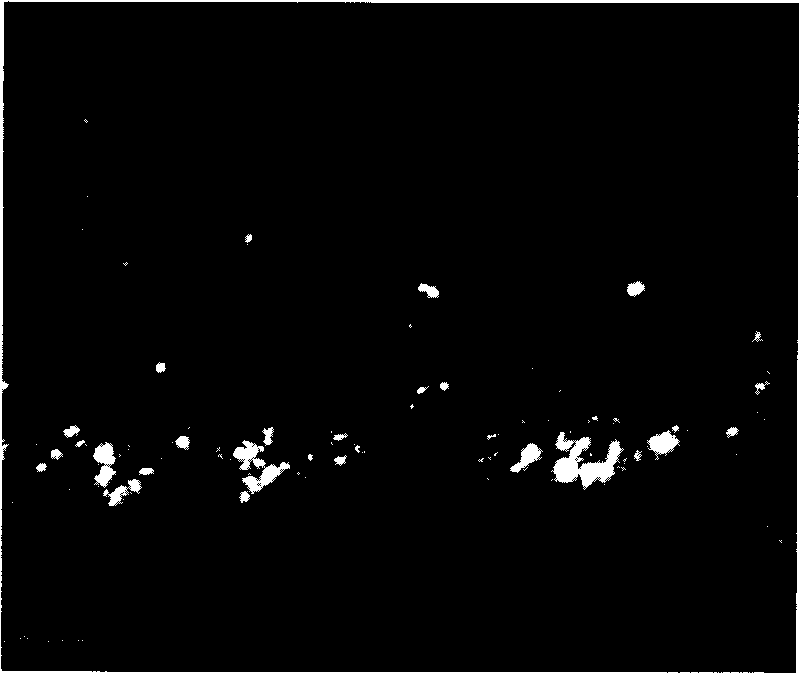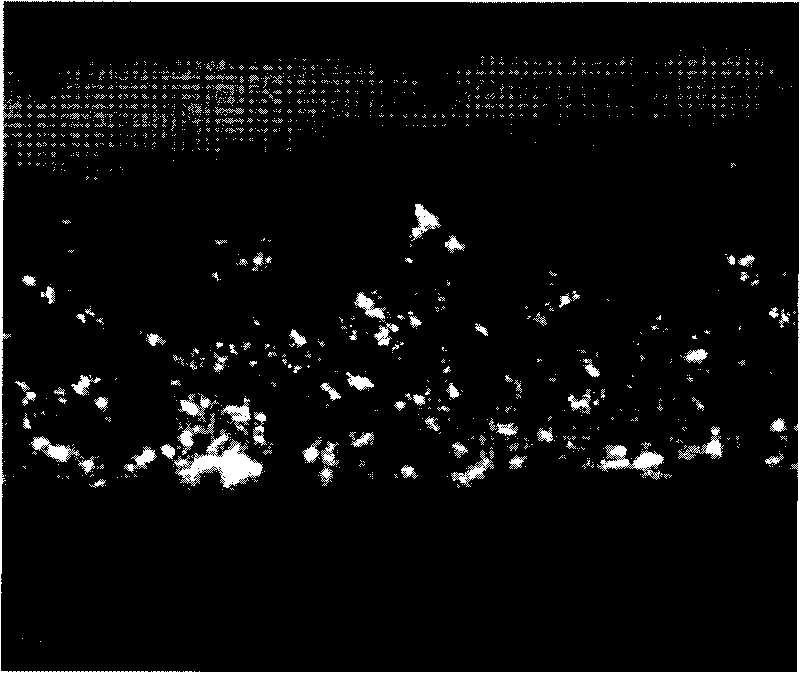Polymer-matrix electric conduction gradient function material and preparation method thereof
A technology of gradient functional materials and functional materials, which is applied in the field of preparing polymer-based conductive gradient functional materials and polymer-based conductive gradient functional materials, can solve the problems of staying in the experimental stage and not suitable for preparing polymer membrane materials, etc. The effect of stable process, excellent mechanical properties and strong market competitiveness
- Summary
- Abstract
- Description
- Claims
- Application Information
AI Technical Summary
Problems solved by technology
Method used
Image
Examples
Embodiment 1
[0039] Put 5g of ABS and 20ml of acetone in a three-necked flask with a stirring device, place it in a 40℃ water bath, and stir at a stirring speed of 50 rpm until the ABS is completely dissolved, then add 2.14g The brass powder was stirred for 10 minutes, and then the solution was drooled on a glass substrate soaked in acetone for 10 hours, and then the drooled glass plate was placed horizontally in a room with slow air circulation to dry naturally. After drying, it is peeled off from the glass plate to obtain the gradient conductive functional film material. Observe the section of the film with an optical microscope (e.g. figure 1 ), it is found that the Cu powder on the lower surface of the film material is the most, and it gradually decreases from bottom to top until there is almost no Cu powder on the surface, forming an obvious composition gradient; use the PC68 digital high resistance meter and the insulation test electrode box to test the upper and lower parts of the fil...
Embodiment 2
[0041] Put 5g PAN and 30ml dimethylformamide in a three-necked flask with a stirring device, place it in a water bath at 90°C, and stir at a stirring speed of 100 rpm until PAN is completely dissolved. At the same time, add 1.3 g of red copper and stir for 3 minutes, and then the solution was drooled on the glass substrate soaked in dimethylformamide for 24 hours, and then the drooled glass substrate was placed horizontally in an oven at 130°C for drying. After drying, it is peeled off from the glass plate to obtain the gradient conductive functional film material. Observe the section of the material with an optical microscope ( figure 2 ), it is obvious that the filler has a gradient distribution in the matrix. The resistivity test shows that the surface resistivity of the upper surface is ρs 1 =9.70×10 15 Ω, the surface resistivity of the lower surface ρs 2 =7.60×10 4 Ω, to achieve the gradient of conductivity.
Embodiment 3
[0043] Mix 3gPS and 2g ABS and put them into a three-necked flask containing 25ml of 1,2-dichloroethane. Under the condition of a water bath at 60℃, stir at a stirring speed of 70 rpm until the ABS and PS are completely dissolved. Add 2.14g of nickel and stir for 5min. Then the solution is drooled on the glass substrate soaked in 1,2-dichloroethane for 24h, and then the drooled glass substrate is placed horizontally in an oven at 65℃ to dry. The gradient conductive functional film material is obtained by peeling off the board. Optical microscope observation of material section ( image 3 ), it can be seen that the bottom surface of the film is rich in metal, and the surface is rich in base material, forming a certain gradient. The resistivity test shows that the surface resistivity of the upper surface is ρs 1 =3.35×10 15 Ω, the surface resistivity of the lower surface ρs 2 = 4.37×10 4 Ω, the resistivity of the upper and lower surfaces differs by 11 orders of magnitude, realizi...
PUM
| Property | Measurement | Unit |
|---|---|---|
| tensile strength | aaaaa | aaaaa |
| tensile strength | aaaaa | aaaaa |
Abstract
Description
Claims
Application Information
 Login to View More
Login to View More - R&D
- Intellectual Property
- Life Sciences
- Materials
- Tech Scout
- Unparalleled Data Quality
- Higher Quality Content
- 60% Fewer Hallucinations
Browse by: Latest US Patents, China's latest patents, Technical Efficacy Thesaurus, Application Domain, Technology Topic, Popular Technical Reports.
© 2025 PatSnap. All rights reserved.Legal|Privacy policy|Modern Slavery Act Transparency Statement|Sitemap|About US| Contact US: help@patsnap.com



